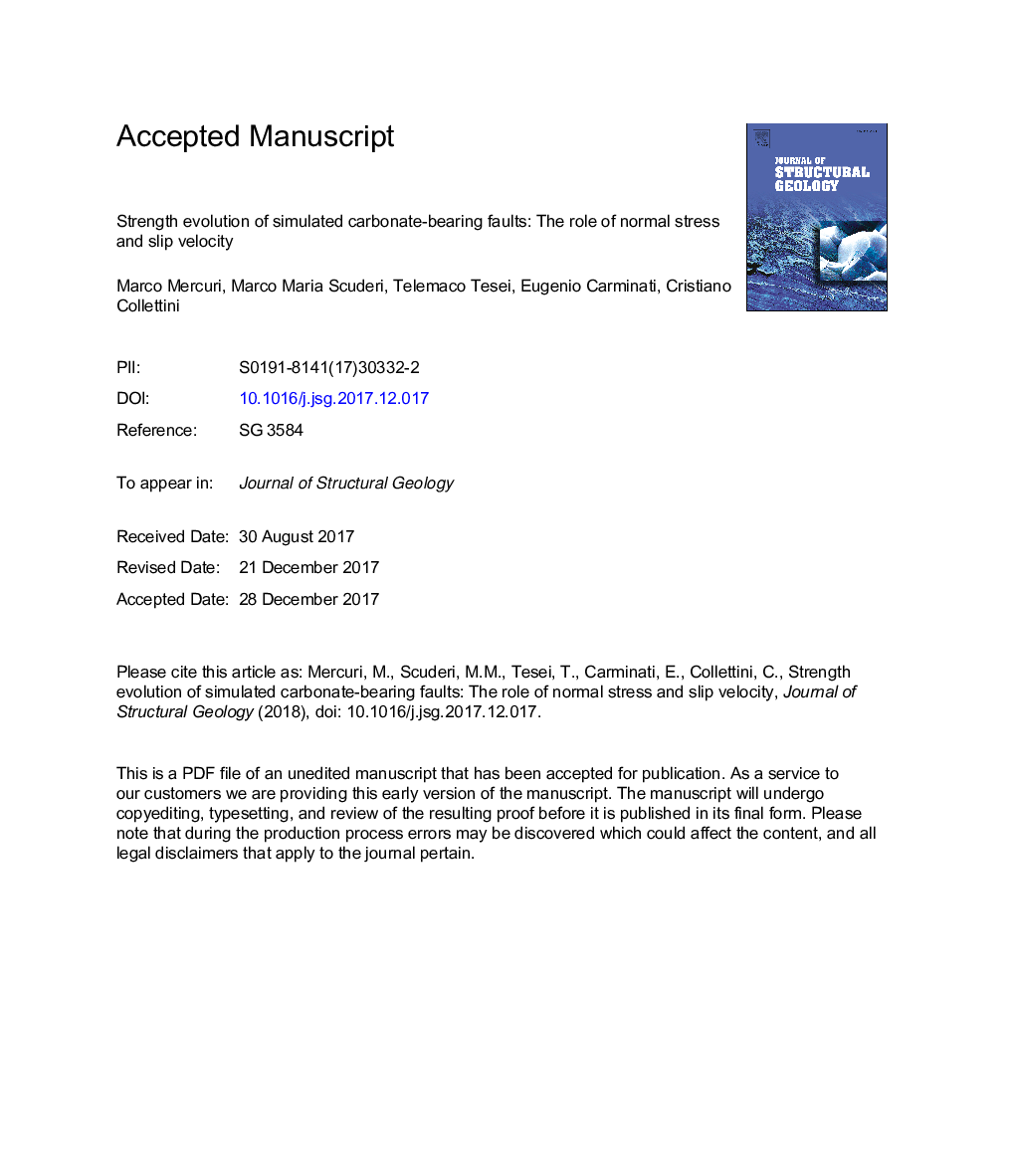| Article ID | Journal | Published Year | Pages | File Type |
|---|---|---|---|---|
| 8914449 | Journal of Structural Geology | 2018 | 31 Pages |
Abstract
A great number of earthquakes occur within thick carbonate sequences in the shallow crust. At the same time, carbonate fault rocks exhumed from a depth < 6 km (i.e., from seismogenic depths) exhibit the coexistence of structures related to brittle (i.e., cataclasis) and ductile deformation processes (i.e., pressure-solution and granular plasticity). We performed friction experiments on water-saturated simulated carbonate-bearing faults for a wide range of normal stresses (from 5 to 120 MPa) and slip velocities (from 0.3 to 100 μm/s). At high normal stresses (Ïn > 20 MPa) fault gouges undergo strain-weakening, that is more pronounced at slow slip velocities, and causes a significant reduction of frictional strength, from μ = 0.7 to μ = 0.47. Microstructural analysis show that fault gouge weakening is driven by deformation accommodated by cataclasis and pressure-insensitive deformation processes (pressure solution and granular plasticity) that become more efficient at slow slip velocity. The reduction in frictional strength caused by strain weakening behaviour promoted by the activation of pressure-insensitive deformation might play a significant role in carbonate-bearing faults mechanics.
Keywords
Related Topics
Physical Sciences and Engineering
Earth and Planetary Sciences
Geology
Authors
Marco Mercuri, Marco Maria Scuderi, Telemaco Tesei, Eugenio Carminati, Cristiano Collettini,
